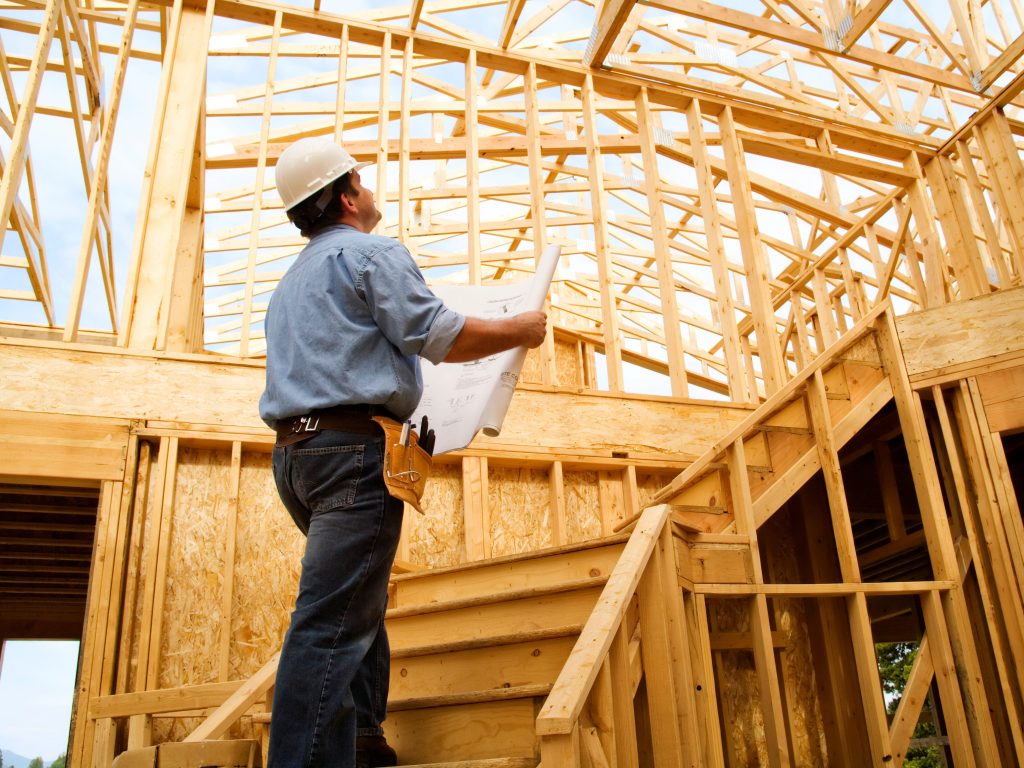- The US has a severe housing shortage – which means the ones that are available aren't affordable.
- There are two reasons the US hasn't built enough homes to meet the demand.
- Materials delays make scheduling projects inconsistent, which makes it hard to retain workers.
The US is in the middle of a severe housing shortage – and it's making it even harder for Americans to afford homes.
It doesn't look like conditions are improving.
According to the Census Bureau, building permits for new residential construction dropped to a five-month low in April.
Much of that decline was in single family homes, meanwhile spring homebuyer demand helped push home prices up 15.5% year over year to a median selling price of $424,405.
"Builders still have a backlog of uncompleted homes to get through before they can break ground on new projects," Odeta Kushi, First American deputy chief economist, told Insider, pointing out that the number of single-family homes that have been approved for construction but not started is up 8.5% since this time last year, according to Census data.
As housing inventory continues to fall short of the 1.5 million homes now needed to meet historically high demand, President Joe Biden announced an initiative that aims to address the crisis. The White House proposes using federal dollars to boost the affordable housing supply. While the move may be a step in the right direction, experts say more will need to be done to attract workers back to the homebuilding industry and bring down prices on supplies — the two key areas causing the nation's dearth of available housing inventory.
"President Biden's plan to address housing affordability challenges is a welcome development, but the administration needs to focus more on resolving rising lumber and building material prices and supply chain bottlenecks that are raising housing costs far faster than wages," Jerry Konter, chairman of the NAHB, said in a statement.
Building materials are hard to find — and they're also really expensive right now
In 2021, more than 90% of builders reported delays and materials shortages, according to the NAHB. As home builders struggle to find basic materials like lumber or steel, it's delaying and increasing the price of construction projects.
"Shortages of materials are now more widespread than at any time since NAHB began tracking the issue in the 1990s, with more than 90% of builders reporting shortages of appliances, framing lumber and oriented strand board," NAHB researchers wrote.
Even when builders do get their hands on materials, the cost is burning a hole in their wallets.
According to the Bureau of Labor Statistics, the prices of goods used in residential construction have climbed 4.9% since the start of 2022 and 19.2% since this time last year. Overall, prices have risen 35.6% since the start of the pandemic – and they're likely to continue rising.
Although the Biden administration has moved to lower tariffs placed on imports of Canadian softwood lumber, the NAHB says price spikes have added $18,500 to the price of an average new single-family home, while driving costs up nearly $8,000 for a multifamily home.
"Historically high price levels for lumber and other building materials are dramatically affecting home prices and rental costs and threaten the nation's economic stability," Konter said in a statement, adding that supply chain price increases have only added to the ongoing housing affordability crisis.
The lack of building materials is driving a construction labor shortage
The US can't build more homes if there's no one around to do the work.
During the onset of the pandemic, fear of this virus' spread contributed to the delay of many construction projects. As building came to a halt, thousands of construction workers were either let go or sought out employment in other fields.
Supply chain bottle necks have also "damaged the livelihoods" of workers in the construction industry, resulting in notable job losses, according to scientific research publication IOP Publishing. After all, if workers don't have materials, they can't work — and that means they have to look elsewhere for a paycheck.
Although residential building construction employment has now surpassed 2020 levels, the industry is still facing a chronic labor shortage. According to the Associated Builders and Contractors association, the construction industry will need to attract nearly 650,000 additional workers on top of its normal pace of hiring in 2022. Additionally, the organization expects an estimated 1.2 million construction workers will leave their jobs for other industries by the end of the year.
"The workforce shortage is the most acute challenge facing the construction industry despite sluggish spending growth," Anirban Basu, ABC chief economist, said in a statement.
The less construction workers there to build homes, the longer it will take for the sector to increase its supply of housing inventory. Although buyer demand has shown signs of cooling, the slower pace of construction is likely to keep home prices relatively high – and that could mean the imbalance of supply and demand will remain a fixture of the US housing market.
"A skilled and capable workforce that is adequate to meet our nation's housing demand is vital to home builders," NAHB researchers wrote. "Despite competitive pay, the home building industry continues to experience labor shortages, which impacts housing affordability."
